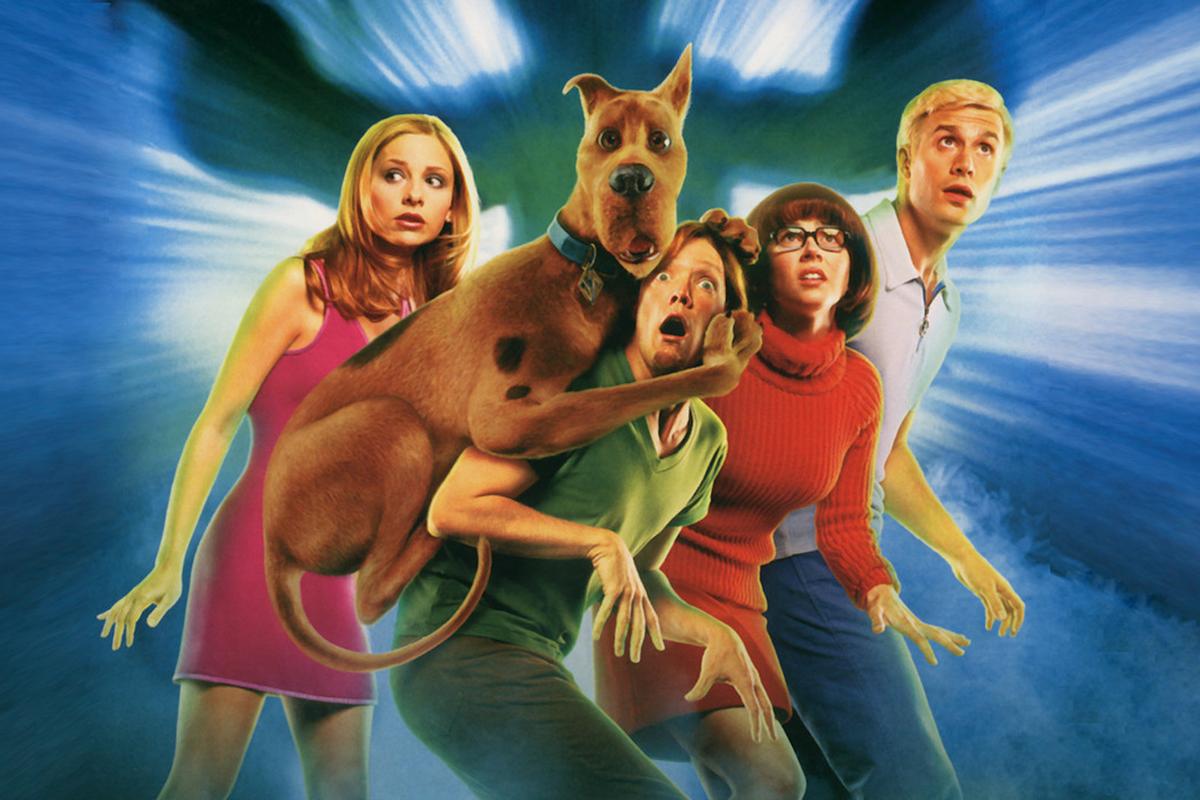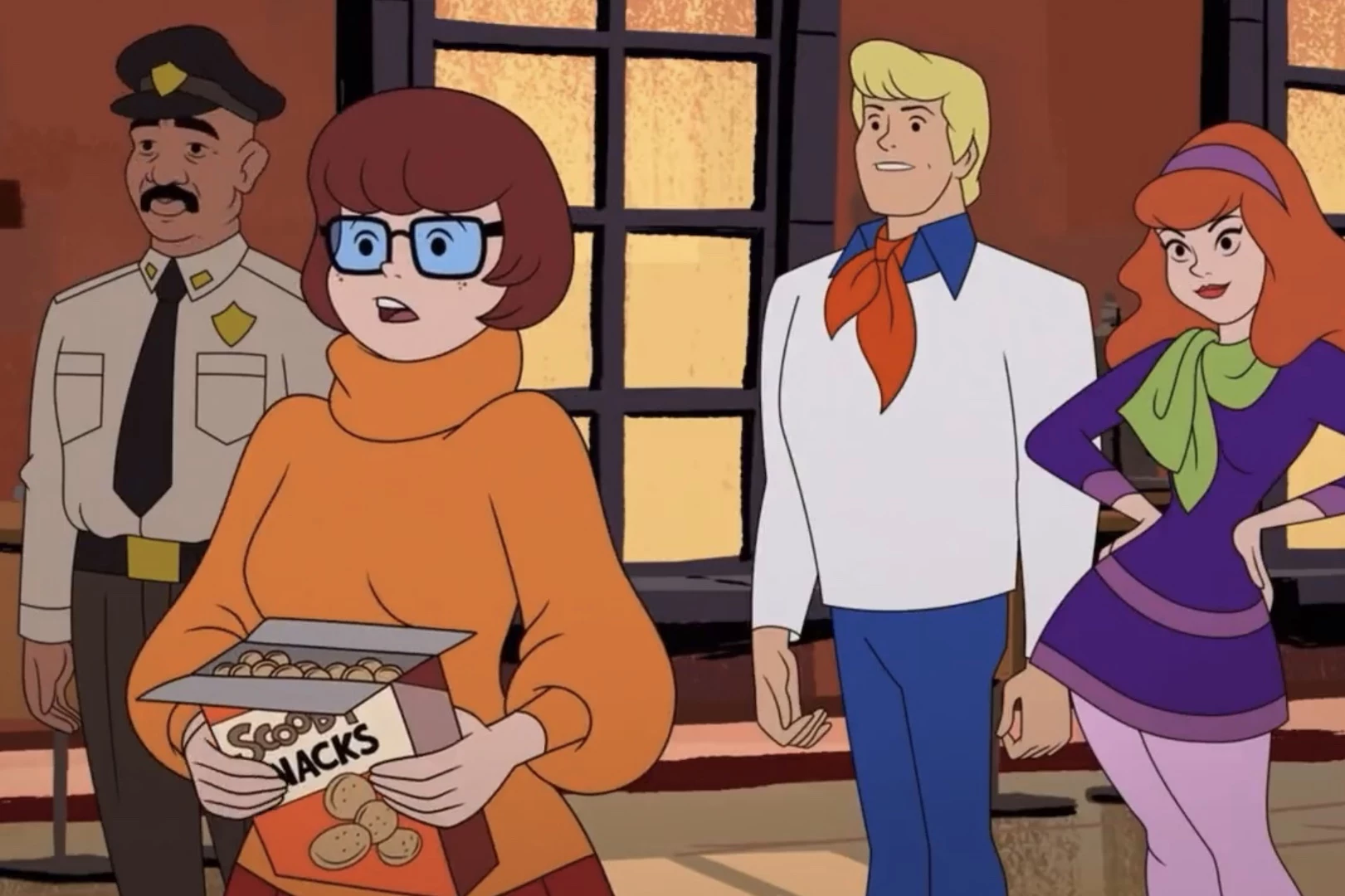
Netflix is eagerly preparing to produce yet another live-action adaptation, this time of a cherished animated classic.
After the success of shows like “One Piece”, “Avatar: The Last Airbender” and “Cowboy Bebop”, the streaming service has revealed plans today for a live-action series. This new show will delve into the origins of an iconic detective squad, along with their cherished canine companion, as they band together to solve the enigmatic case that set their adventures in motion from the very beginning.
In other words: Live-action Scooby-Doo.

The Scooby-Doo franchise, established in 1969 by Joe Ruby and Ken Spears for Hanna-Barbera, has persisted through the years, primarily as a collection of animated TV shows centering around the eponymous dog and his human companions who solve mysteries. Previously, there was one notable live-action adaptation, but that took form as a two-part movie franchise: 2002’s Scooby-Doo and 2004’s Scooby-Doo 2: Monsters Unleashed. These films were penned by James Gunn, who later became known for his work in Marvel and DC filmmaking.
Here is how Netflix describes this new series:
A contemporary take on the famous gang of teenage detectives and their extraordinary dog: In the climactic summer at camp, longtime pals Shaggy and Daphne find themselves entangled in a chilling enigma revolving around a forlorn Great Dane pup who might have seen a supernatural killing. Joined by the rational and scientifically-minded local, Velma, and the peculiar yet captivating newcomer, Freddy, they embark on a mission to unravel the case that’s drawing each of them into a haunting nightmare, one that could potentially reveal their hidden truths.
Netflix says its live-action Scooby-Doo series will run for eight episodes.
TV Shows We Used to Love That Are Cringe Now

The West Wing (1999-2006)
In discussions about TV shows from the past that seem outdated in today’s era, The West Wing is often mentioned quite frequently. It isn’t because The West Wing was terribly made or had poorly written plots, or gave its actors awkward dialogues (although these can sometimes be true). Rather, it was a show that depicted an idealized version of politics instead of a realistic one. Given the current state of politics in our country, the portrayal of politics in The West Wing seems unrealistic. In this series, the leaders were more like philosopher kings who always prevailed morally, or if they didn’t, faced consequences later. However, that’s not how real life works, and watching something like that now leaves a void rather than providing comfort. (And we won’t delve into The Newsroom.)

Entourage (2004-2011)
Remarkably, the show “Entourage” might be one of the most surprising series ever produced, given its creation and endurance seem almost unbelievable. Centered around a semi-successful Hollywood figure and his group of entertainment companions traversing Los Angeles, it’s hard to believe this concept was conceived in the mid-2000s – a time marked by suppressed sexual tension and rapidly advancing technological lifestyles. Today, characters like Vinny Chase and his friends appear as anachronistic figures; their portrayal of masculinity from 2004 now seems more annoying than admirable. To put it mildly, the sexual dynamics within “Entourage” are outdated to say the least. While it still offers a quirky glance into the past, its appeal is limited at best.

Supernatural (2005-2020)
Is it inherently cheesy for shows to be cringeworthy, or does it happen as they progress? This is the predicament faced by ‘Supernatural’, a series that initially offered an entertaining blend of monster-hunting adventures set to classic rock tunes, with generous interpretations of Biblical mythology. However, it outstayed its welcome by around four or five seasons, with each apocalypse-themed seasonal arc losing distinctiveness and the characters’ deaths and resurrections becoming repetitive. The relationship dynamics among the main characters also became tiresome and predictable. In its final episodes, it controversially acknowledged a popular fan ship in a way that was perceived as discriminatory towards homosexual relationships. What an extraordinary journey!

The Secret Life of the American Teenager (2008-2013)
The show “The Secret Life of the American Teenager,” a teen pregnancy soap opera produced by ABC, was generally considered cheesy but incredibly popular. Despite its ominous title reminiscent of a public service announcement from the ’70s, one might expect it to challenge societal norms about today’s youth. However, it turned out to be a typical high school drama with a somewhat traditional perspective on teen pregnancy (keep the baby, find a husband, start a family, etc.). The dialogue in this series is so bad that a simple search for “secret life cringe” results in numerous examples, one of which includes an incredibly awkward conversation.

Glee (2009-2015)
A series that often left viewers cringing, “Glee” constantly danced between being truly awful and so bad it was entertaining, much like an accident you can’t help but watch. Following the “I can’t believe I’m seeing this” principle, which seems to be creator Ryan Murphy’s signature style, “Glee” delved into outlandish storylines that became increasingly bizarre with each episode. Each character was either too one-dimensional or had an excessive amount of subplots, and the covers and mixes of popular songs it presented were so irritating we’d prefer watching something else. The performance of “Blurred Lines” led by a school faculty member is just one of the many questionable decisions made by “Glee”.

Sherlock (2010-2017)

Game of Thrones (2011-2019)
A popular series, “Game of Thrones,” initially received overwhelming love but ended up being criticized heavily in its final episodes. Despite this shift in reception, we still believe that the show was excellent, albeit with certain limitations. The decline in quality was rather sudden and significant. The show required a lot from viewers, such as remembering non-existent titles and places, and keeping track of numerous intricate plots per episode. Over time, these demands grew tiresome, especially towards the end when beloved characters started to meet untimely deaths, each one more questionable than the last. Nowadays, when someone claims to be a fan, they often feel compelled to specify “of the early seasons,” as discussions about their fandom might lead to arguments intense enough for a Dothraki warrior.

House of Cards (2013-2018)
In all honesty, I’ve always felt that “House of Cards,” despite being one of Netflix’s pioneering original series, didn’t quite live up to its initial hype. Initially marketed as a politically astute drama with an edge, reminiscent of “The West Wing” but with a darker undertone, it followed the story of a ruthless congressman and his ambitious wife, who resorted to murder and deceit to ascend to the White House.
At first, the show’s unique approach to breaking the fourth wall was intriguing. However, as time went on, the escalating one-upmanship in its season finales lost its charm and became monotonous. Many viewers stopped watching before the end, primarily due to the show’s awkward handling of its lead actor’s off-screen scandals.

Orange Is the New Black (2013-2019)
Initially, I found myself captivated by “Orange Is the New Black,” much like how people got hooked on “House of Cards.” The series started off strong with its prison drama/dark comedy setting in an all-women’s facility, boasting a diverse cast and a network of engaging plotlines that hinted at numerous seasons full of mystery and thrill. However, the show’s downfall lies in its persistent focus on the least captivating character in each scene, a flaw that became glaringly apparent in our main character, who even die-hard fans agreed was the most uninteresting on OITNB. Despite this, she always received the majority of screen time. After a couple of seasons of this, I, like many others, began questioning my continued investment in the show, and now it serves as an example of what not to do when plotting subsequent seasons for a highly successful series.

The Mandalorian (2019-2023)
The show “The Mandalorian” and its spin-offs may have significantly tarnished the reputation of the Volume, the video wall soundstage known for capturing scenes with digital backdrops simultaneously with special effects that moved in sync with the cameras. Initially, the first season offered a stylishly cool narrative set in a Wild West-inspired “Star Wars” universe, following a solitary gunfighter journeying through a hostile desert world. However, subsequent seasons deviated from this engaging concept by excessively incorporating intricate lore that lacked audience interest, accompanied by shoddy effects and blurry landscapes that failed to meet the expectations set by the groundbreaking technology of the filmmakers. By the time its finale approached, viewership had significantly declined, marking a sharp contrast from the show’s promising start.
Read More
- Who Is Harley Wallace? The Heartbreaking Truth Behind Bring Her Back’s Dedication
- 50 Ankle Break & Score Sound ID Codes for Basketball Zero
- Here’s Why Your Nintendo Switch 2 Display Looks So Blurry
- 100 Most-Watched TV Series of 2024-25 Across Streaming, Broadcast and Cable: ‘Squid Game’ Leads This Season’s Rankers
- 50 Goal Sound ID Codes for Blue Lock Rivals
- Elden Ring Nightreign Enhanced Boss Arrives in Surprise Update
- How to play Delta Force Black Hawk Down campaign solo. Single player Explained
- Jeremy Allen White Could Break 6-Year Oscars Streak With Bruce Springsteen Role
- MrBeast removes controversial AI thumbnail tool after wave of backlash
- KPop Demon Hunters: Real Ages Revealed?!
2025-03-26 21:54